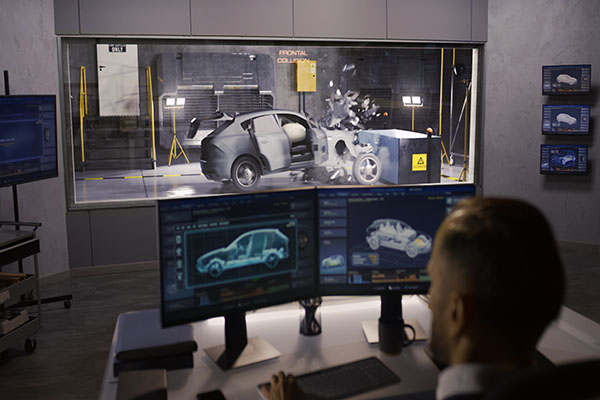
When it comes to purchasing a new car, safety is something every buyer is looking for. We often hear about car safety ratings, but have you ever wondered how these ratings are measured? Understanding how car safety ratings are determined can help you make advised decisions when choosing a vehicle; that's why we have covered this topic in the blog below.
The Main Measure - Crash Tests
One of the primary methods used to measure car safety ratings is through crash tests. Various organizations, such as the National Highway Traffic Safety Administration (NHTSA) and the Insurance Institute for Highway Safety (IIHS), conduct rigorous crash tests to evaluate a vehicle's performance in different collision scenarios. These tests simulate real-life accidents and assess factors like occupant protection and structural integrity. You might be familiar with the test dummies used in these tests, which are yellow with black accents
What is the test composed of?
- Frontal impact test
- Side impact test
- Other test not related to crashing or impact
Frontal impact tests evaluate how well a vehicle protects its occupants during a head-on collision. Crash test dummies are used, as mentioned above, to measure the forces exerted on different body parts and assess the potential for injuries. Test parameters include the vehicle's structure, seat belt effectiveness, and frontal airbag deployment.
Side impact tests measure a vehicle's ability to protect occupants in a T-bone or broadside collision. Test dummies (sometimes even baby models) are positioned in the driver and passenger seats to assess the level of protection provided by the vehicle's side structures, side airbags, and other safety features.
Rollover Resistance
Rollover resistance tests evaluate a vehicle's stability and its ability to prevent rollover accidents. Factors such as the vehicle's center of gravity, suspension system, and electronic stability control are considered to determine its resistance to rollovers.
Safety Assist Technologies
Car safety ratings also take into account the presence and effectiveness of advanced safety assist technologies. These may include features like forward collision warning, automatic emergency braking, lane departure warning, blind-spot detection, and adaptive cruise control. The inclusion and performance of these technologies can enhance a vehicle's safety rating.
While we at Bimmer Rescue can't help you with a safety test, we can make sure that your car is maintained and up to date on any other services! If you suspect the need for an oil change, make sure to stop by!
Make An Appointment